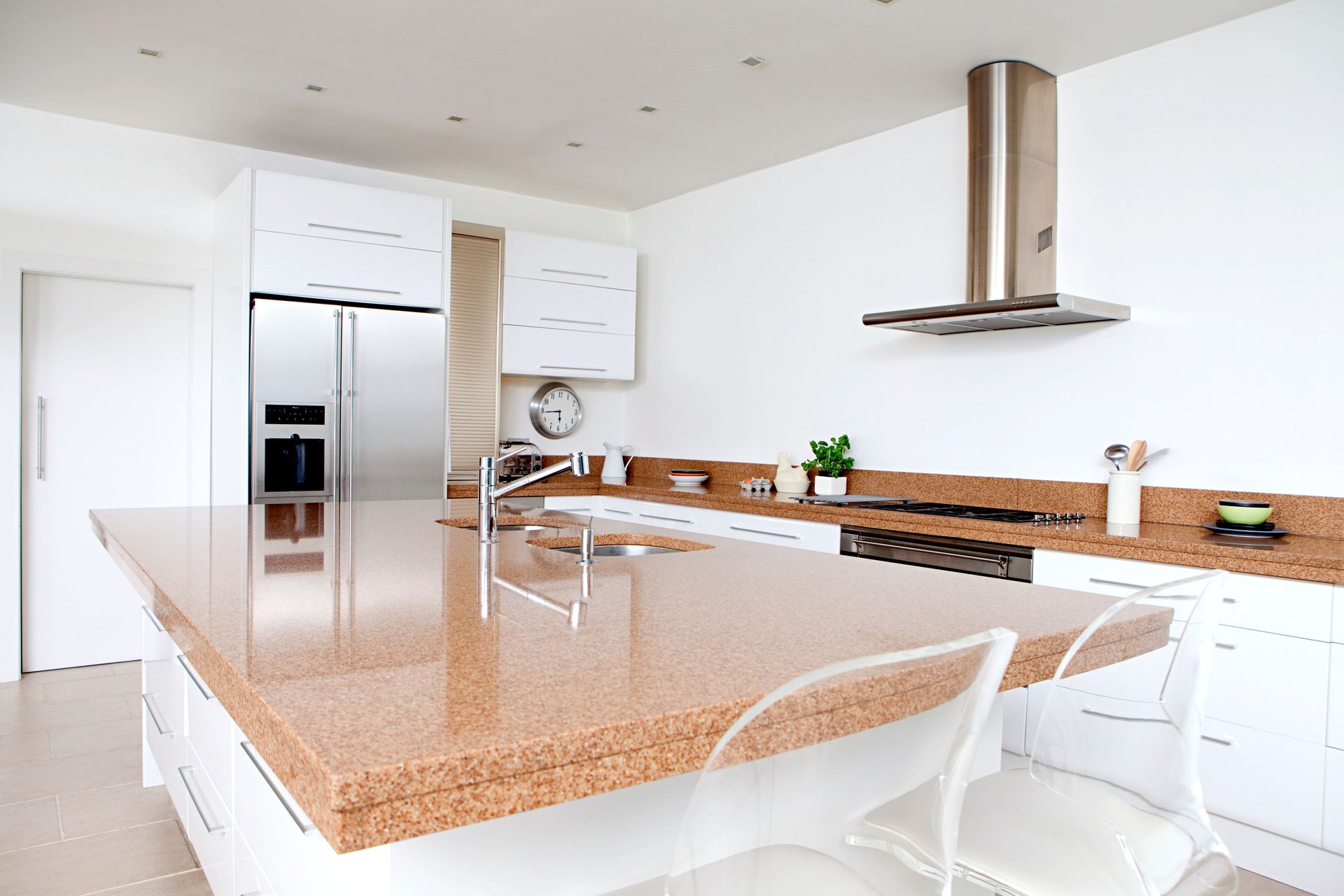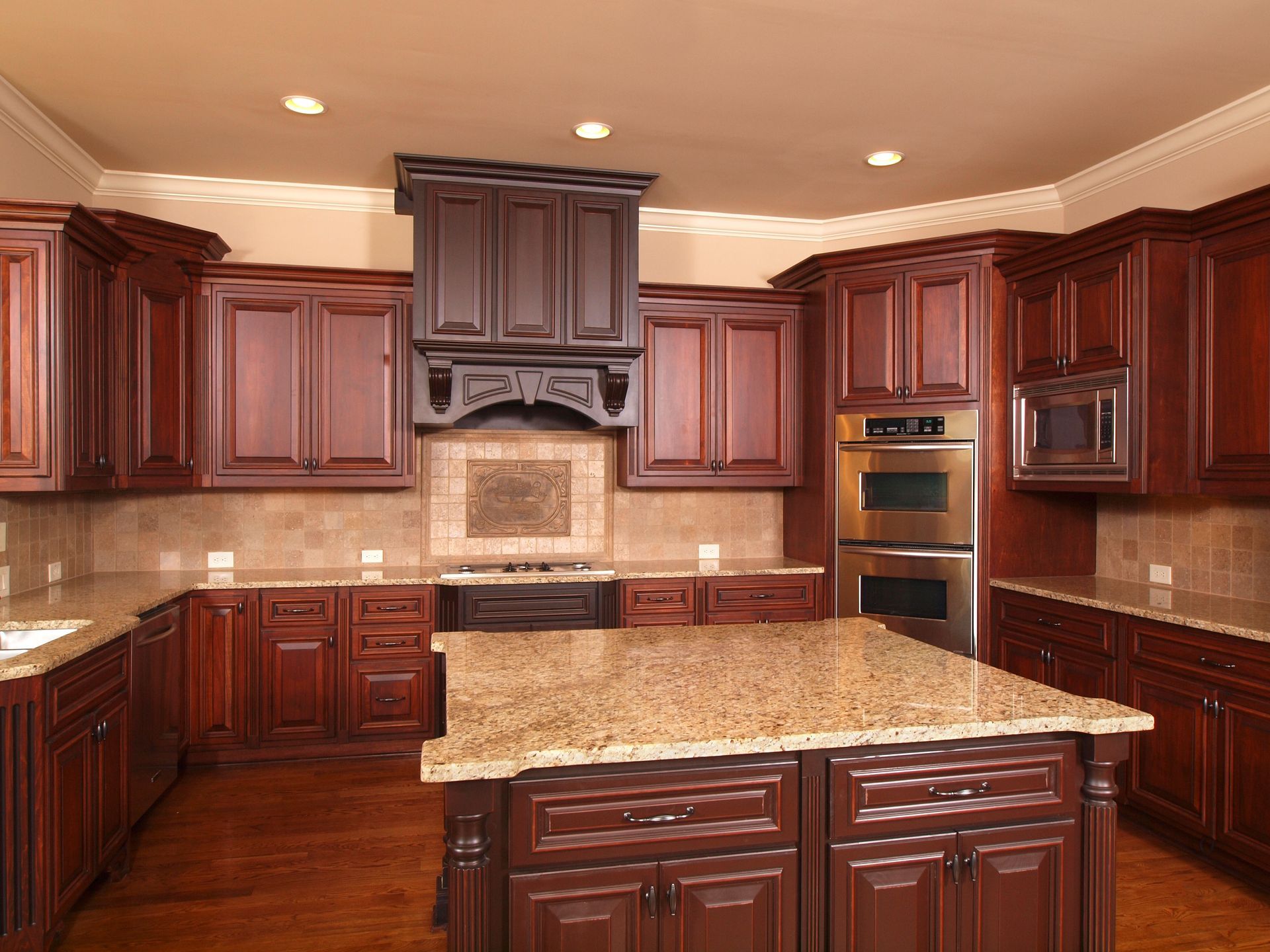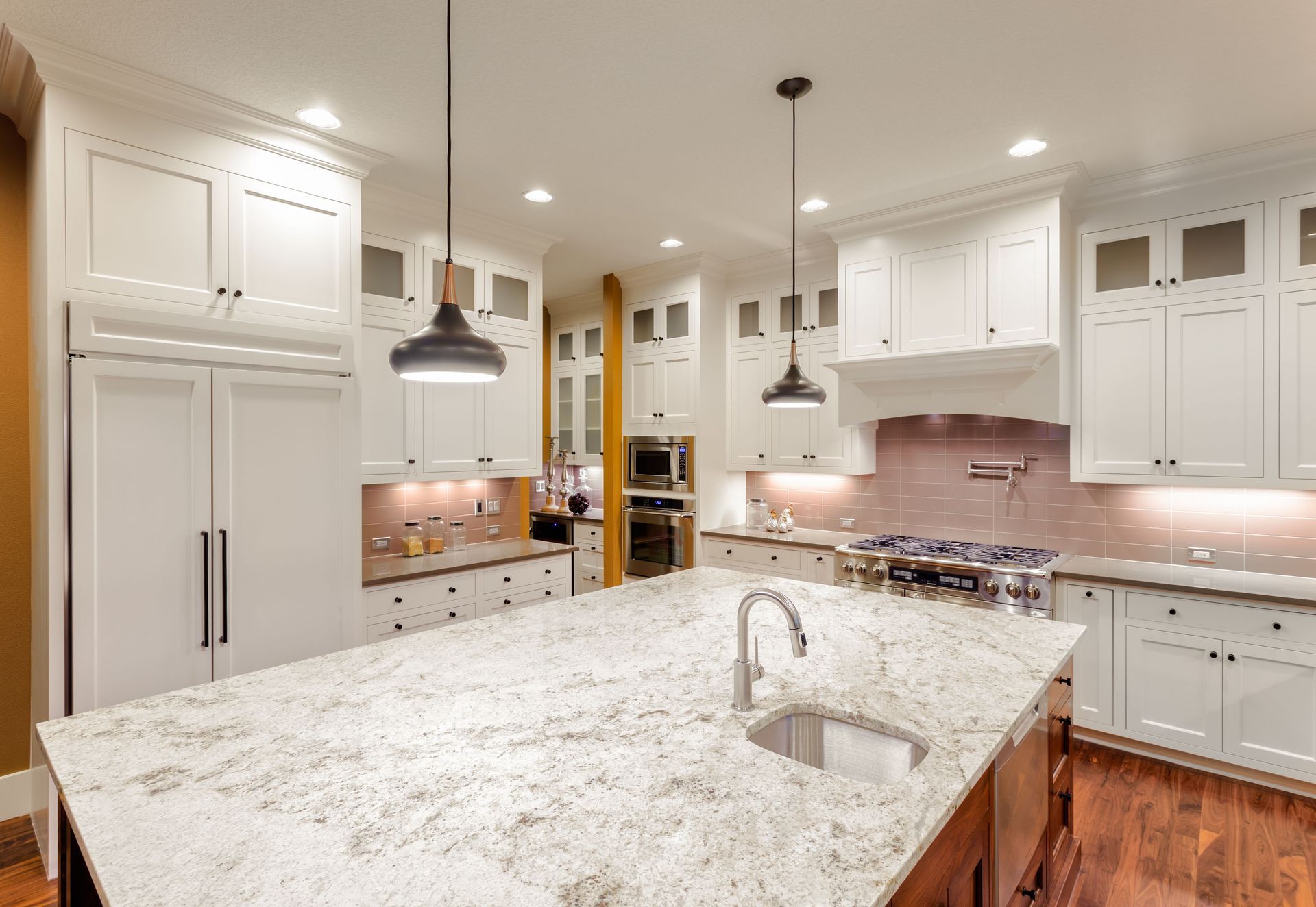Choosing the Right Counters For Your Kitchen Remodel
When planning a kitchen remodel, countertops are one of the most defining features you’ll choose. They not only serve a practical function but also influence the entire room’s style, flow, and value. Whether your goal is to create a sleek, modern space or a warm, inviting family hub, selecting the right countertop material requires careful thought about how you live, cook, and entertain. The best choice balances beauty, durability, maintenance, and budget—all tailored to your household’s unique needs. By the end of our guide, you’ll have the insights you need to make an informed decision that not only enhances your kitchen’s appearance but also supports the way you live and use your space every day.
Understanding Your Needs
Determining the Primary Use of the Kitchen
When choosing countertops, it's essential to first understand the primary function of your kitchen. For some, it might simply be a place to prepare meals, while for others, it serves as a communal space for entertaining guests. If your kitchen is the heartbeat of your home, you’ll need countertops that can withstand frequent use and accommodate multiple activities. Invariably, the choice of material and design will be influenced by the kitchen’s role in your daily life. By assessing how you use the space, you can prioritize features such as heat resistance, countertop area, and ease of cleaning.
Evaluating the primary use of your kitchen also impacts the choice of material and design. For example, a kitchen used frequently for preparing gourmet meals may benefit from sturdy, heat-resistant materials like granite or quartz. Conversely, kitchens that double as social spaces might benefit from countertops offering more aesthetic appeal, like marble. Moreover, how you use your kitchen will determine the need for customization, such as integrated cutting boards or expansive prep spaces. Each choice is a reflection of how the space complements your lifestyle.
Assessing Your Budget Constraints
Budget is a significant consideration when selecting countertops. Being realistic about what you can afford helps narrow down choices to the most viable options. Different materials fall within various price ranges, with laminate options starting on the lower end and high-end materials like marble or granite being costlier. Early in the process, it's beneficial to set a maximum budget to ensure all selections stay within an affordable range. This approach minimizes the risk of overspending and helps in prioritizing essential features over superficial enhancements.
Understanding the comprehensive costs associated with different materials is crucial. For example, while natural stone like granite may require a hefty initial investment, its durability and potential to increase home value might justify the expense. According to Today's Homeowner, the average granite countertop is typically 1.25 inches thick, offering resilience and longevity. On the other hand, materials like butcher block and laminate provide budget-friendly options but might require more frequent replacements. Weighing upfront costs against long-term benefits is key to a satisfactory outcome.
Evaluating Durability Requirements
Durability is a cornerstone of selecting appropriate kitchen countertops, and it greatly depends on the family's lifestyle and kitchen usage frequency. Materials like granite and quartz, known for their robust nature, are excellent choices for kitchens that experience heavy traffic. Granite is known for its ability to withstand scratches, heat, and regular use, making it an ideal option for busy households. Conversely, materials like marble, although visually striking, are softer and more prone to scratches and stains. Understanding these durability differences ensures that the selected material aligns seamlessly with your kitchen’s demands.
Most homeowners prioritize durability to minimize maintenance and replacement costs in the long run. Regular use of sharp tools, exposure to high temperatures, and constant contact with liquids all require consideration of how a countertop material holds up under stress. Quartz provides a highly durable option with a resistance to stains and scratches superior to other stones due to its engineered nature. Equally, opting for durable surfaces ensures that the kitchen remains a functional and beautiful part of the home for years to come without frequent touch-ups. Durable countertops act as a long-term investment that adds value and peace of mind.
Identifying Maintenance Preferences
Maintenance is a critical consideration in the selection process, often dictating the choice of countertop material. For homeowners who prefer low-maintenance kitchens, materials like quartz and laminate offer excellent options. Quartz is particularly popular due to its non-porous nature, which resists stains without needing regular sealing. Alternatively, marble requires significant upkeep to prevent etching and staining, making it suitable for those willing to invest in regular maintenance. Understanding your willingness and ability to maintain your countertops is essential in selecting a material that fits your lifestyle.
The level of maintenance required by different materials can have significant implications for household routines and costs. While some materials demand regular sealing and special cleaning agents, others may withstand standard cleaning routines. For instance, butcher block countertops offer a warm aesthetic but require periodic sealing and oiling to protect against water damage. Weighing daily cleaning ease against longer-term care efforts and costs provides a clearer picture of overall maintenance demands. Selecting a countertop that aligns with personal maintenance preferences ensures a hassle-free kitchen experience.
Exploring Countertop Materials
Granite: A Timeless Choice
Granite countertops have long been associated with luxury and durability, making them a top choice for kitchen remodels. Their unique patterns and color variations contribute to creating a one-of-a-kind focal point in any kitchen. Granite’s heat-resistant properties make it suitable for all cooking endeavors, providing both aesthetic appeal and functionality. Additionally, granite maintains structural integrity against heavy use and wear. It represents an investment in both home value and kitchen longevity.
Beyond aesthetics, granite’s resilient nature minimizes the likelihood of surface damage from everyday activities. It is highly resistant to scratches and can endure heavy cookware impacts without cracking or chipping. Furthermore, when properly sealed, granite offers a stain-resistant surface that enhances hygiene and simplifies cleaning. These attributes underscore its value both in daily culinary activities and as a durable investment that withstands family life. Granite’s compatibility with diverse design aesthetics adds versatility, allowing seamless integration into contemporary or traditional kitchen designs.
Quartz: A Blend of Style and Durability
Quartz countertops offer an appealing blend of aesthetic beauty and remarkable durability. Manufactured through a combination of natural quartz with resins and pigments, this engineered stone is non-porous, eliminating concerns about stains and bacterial intrusion. This feature makes quartz countertops a practical choice for busy kitchens, providing low-maintenance convenience without compromising on design potential. Quartz’s engineered nature allows for precise control over color and pattern uniformity, catering to homeowners who desire consistency between surfaces.
Functionally, quartz’s durability is unparalleled, capable of withstanding significant impacts and resisting scratches. Its non-porous surface means that, unlike natural stones, quartz does not require regular sealing, offering significant maintenance advantages. Furthermore, it’s available in an expansive range of colors and finishes, displaying both natural stone imitation and unique designs, allowing for extensive personalization of kitchen spaces. Despite being typically heavier, quartz’s robust nature ensures it maintains its strength and attractive appearance over time, promising lasting satisfaction.
Choosing the right countertops for your kitchen remodel is about more than just appearance—it’s about creating a space that reflects how you live and enhances your daily routines. From understanding your kitchen’s primary use and setting a realistic budget to evaluating durability and maintenance needs, every decision plays a part in achieving a balance between functionality and style. Countertops serve as both a visual centerpiece and a hardworking surface, making it essential to select a material that can handle your lifestyle while elevating the overall aesthetic of your home. Reach out to MGL Granite Inc today to learn more about our countertop options.





Share On: